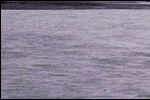
| Home
Mission 2007 Team Research Sources Progress Journal |
|
Background Source: InfoRain Map
The area in question is actually the Alaskan outer continental shelf also referred to as the 1002 area. Although, it comprises only about 10 per cent of the total area of the Refuge but from May to July is the
center of intense biological activity.
An baseline understanding of the climate and relief is essential to predict the times and places of ecological significance.
The 1002 area includes part of the Beaufort Sea coastline. Nestled between the high glaciers of the Brooks Range and the lagoons and ice floes of the Beaufort Sea, the area is a narrow wind-swept coastal plain of about 1.5-million-acre. This is essentially a low lying area, 15 ft or less, and is characterized by extensive deltas of major rivers and other smaller streams. This makes it an excellent calving area for the porcupine caribou herds.
In order to create a comprehensive
model of the ecosystem, we have to set up the important parameters and
components that define an ecosystem. Based on ecological models from
multiple references, we have determined the main constituents of an
ecosystem to include the following: geography structure and relief,
climate, soils, hydrology, producers and consumers, decomposition and
soil processes, energy and nutrient cycling, and interaction between
terrestrial and aquatic communities (if relevant to the area of study).
By developing a descriptive and quantitative model for each constituent
we can compile the information for the structure and function of the
ANWR ecosystem.
|



| Last updated: Nov 19, 2003 | Team 5 - m2007-5@mit.edu |

 Next: Geography>>
Next: Geography>>